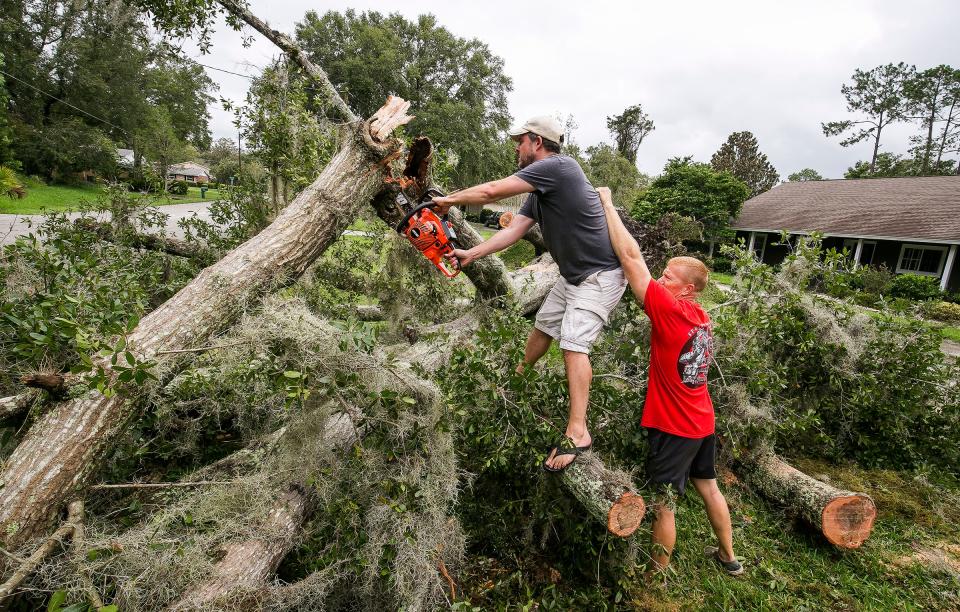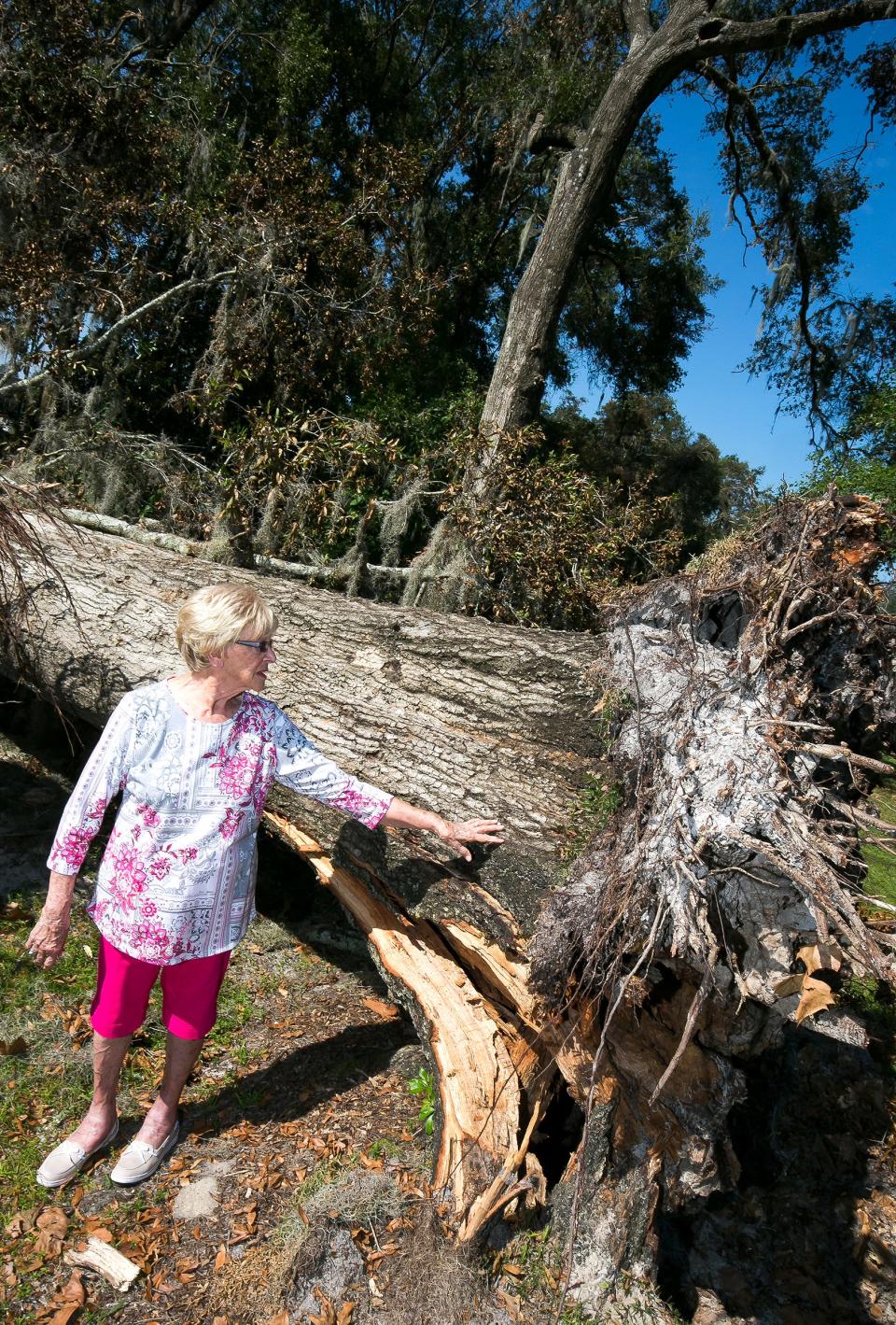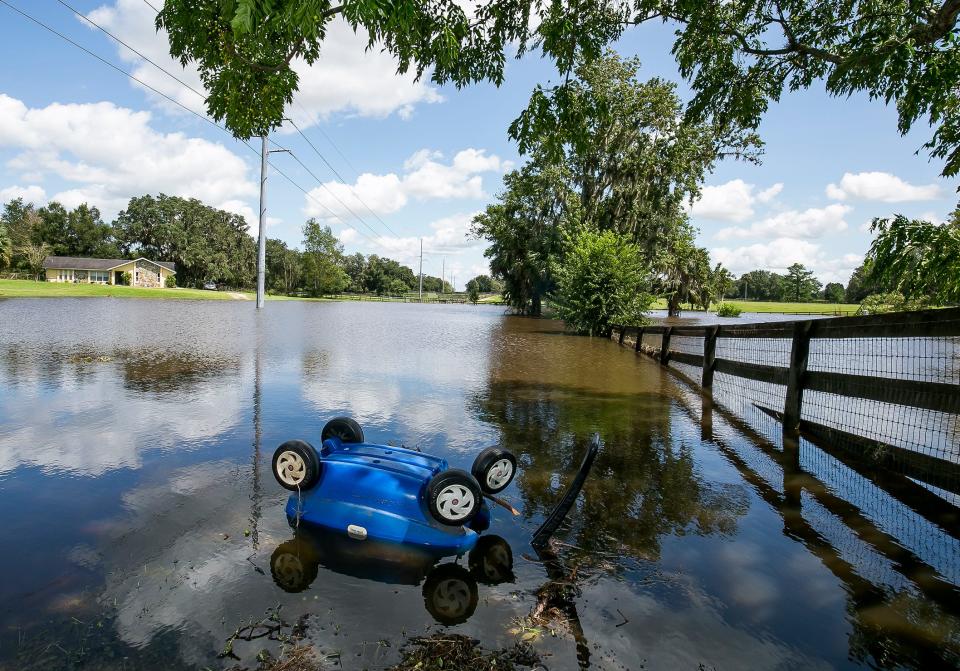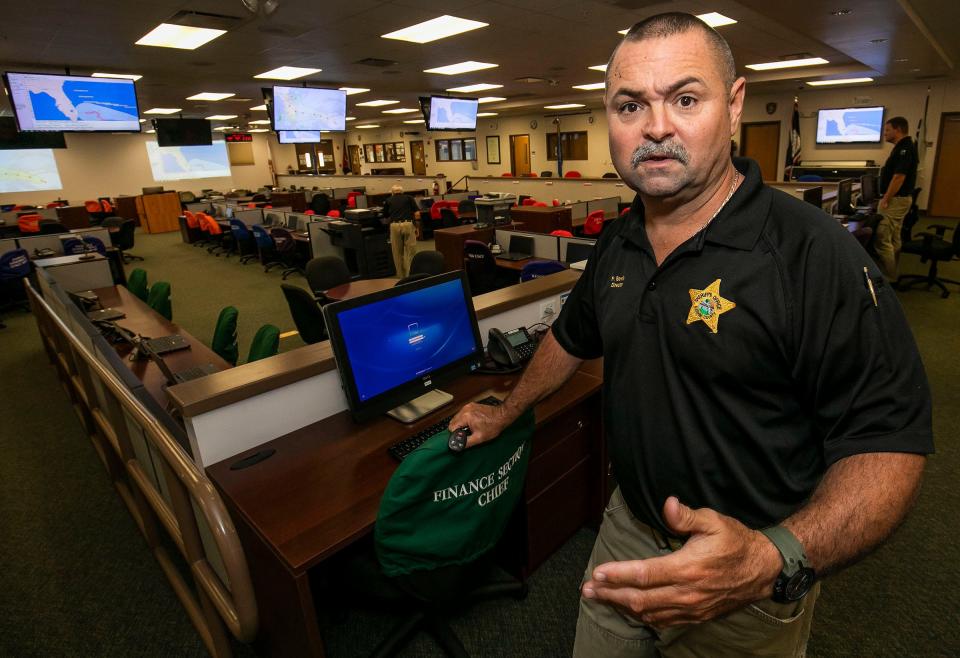'Mother Nature ultimately decides' where a hurricane will go, and Marion County should prepare
It has been nearly five years since Hurricane Irma struck Cudjoe Key in Southwest Florida, packing 130 mph winds. Irma packed a punch as it turned north up the spine of the Sunshine State and through Marion County.
In Marion alone, Irma's wind gusts topped 100 mph and caused significant damage to more than 1,000 homes. The storm flooded 70 roads and caused 56 sinkholes. The overall damage estimate for all jurisdictions in Marion reached about $200 million.
But one of the state's most veteran meteorologists says that, had Irma stuck to its original projected path, coming ashore north of Tampa and heading northeast toward Jacksonville, then southwestern Marion County would have been devastated.
2022 hurricane season: Will it be a stormy summer? Here's the 2022 Atlantic hurricane season forecast.
Looking back: A year after Hurricane Irma
Torrid growth in Marion County: Two upcoming communities tweak plans; another breaks ground
Al Sandrik, the warning coordination meteorologist for the National Weather Service in Jacksonville, and staff led the charge back then to evacuate people living in mobile homes in southwest Marion, from Dunnellon to southwest Ocala.
"If Irma had followed the official track, and thank God it did not, we would have been looking at major hurricane force winds in Rainbow Lakes Estates and Dunnellon, and probably even as far east as the western part of Ocala," Sandrik said.
Sandrik said as bad as Irma was In Marion County, "it could have been so much worse."
The comments came during an interview to discuss the 2022 hurricane season. Two of the most active hurricane seasons on record were in 2020 and 2021, and top hurricane experts believe everyone should expect another above-normal season this year.
Experts predict 2022 will be the 7th-consecutive above-average year
The hurricane season runs June 1 through Nov. 30. Meteorologist and researcher Phil Klotzbach of Colorado State University, and his team, believe there will be 19 named storms in 2022, up from the season average of 14.
There were 21 in 2021 and 30 in 2020. Klotzbach and his team are among the nation's top seasonal hurricane forecasters, and they believe 2022 will be the seventh consecutive above-normal season.

Of the nine predicted hurricanes, four are expected to become major hurricanes with sustained wind speeds of 111 mph or greater. The report also states there is a 71% chance at least one major hurricane will make landfall in the USA.
Between two and four named storms could be expected to hit the northern Gulf of Mexico. Klotzbach noted the reasons for the above-average forecast include the absence of El Niño, which is the warming of tropical Pacific Ocean water.
When El Niño is active, Atlantic hurricanes are quashed by upper-level wind shear that keeps hurricanes form developing into monster storms. Since El Niño will not be present, the sea temperatures and atmosphere will be perfect for storms.

Sandrik has always asked that residents be prepared for the worst. Even if it is a slow hurricane season, all it takes is one storm to hit a community and it will be considered a bad hurricane season.
Think about Hurricane Andrew, which struck Homestead nearly 30 years ago. It is one of just a handful Category 5 hurricanes to strike the United States.
In August 1992, Andrew was the first hurricane to form that season and it was a monster. Sandrik said even if there was only one named storm during a year, a landfall in your city means a bad year. There were only seven storms in all of 1992.

Emergency official says there are 31k-plus mobile homes in Marion
Preston Bowlin, Marion County's emergency management director, said many residents do not realize that Dunnellon is only 20 miles from the Gulf of Mexico and Ocala is only 54 miles from Crystal River and 70.5 miles from Ormond Beach.
One of the things that keeps Bowlin up at night is that Marion County has more than 30,000 mobile homes. Marion County is 25% larger in size than Rhode Island, and those mobile homes are spread out across 1,663 square miles.

"We have 31,748 mobile homes in Marion County," Bowlin noted, adding that what complicates things is that many snowbirds occupy them part of the year and it is not always easy to know if they are in town or not.
'We've been blessed': Tropical Storm Elsa could have been worse for Ocala/Marion, west coast
Bowlin added that spaghetti models, or hurricane paths generated by computers operated by dozens of companies, usually give a wide range of potential tracks. So even if a resident has a range of paths, those are only predictions and not guaranteed.
"You cannot say 100% that these storms are going to stick with a path," Bowlin said. You know that a wobble will move the path and Mother Nature ultimately decides where it's going to go."
In the end, many agencies are predicting above-normal hurricane activity this season.
The highest prediction comes from North Carolina State University, which believes 17 to 21 named storms will form, seven to nine of which being hurricanes and three to five of those being major storms.
Meanwhile, the University of Arizona is predicting a normal hurricane season. Its forecast calls for 14 named storms, seven of which could become hurricanes and three of those being major hurricanes.
Joe Callahan can be reached at (352) 817-1750 or at joe.callahan@starbanner.com. Follow him on Twitter @JoeOcalaNews.
This article originally appeared on Ocala Star-Banner: Hurricane Irma's original path could have devastated Marion County

